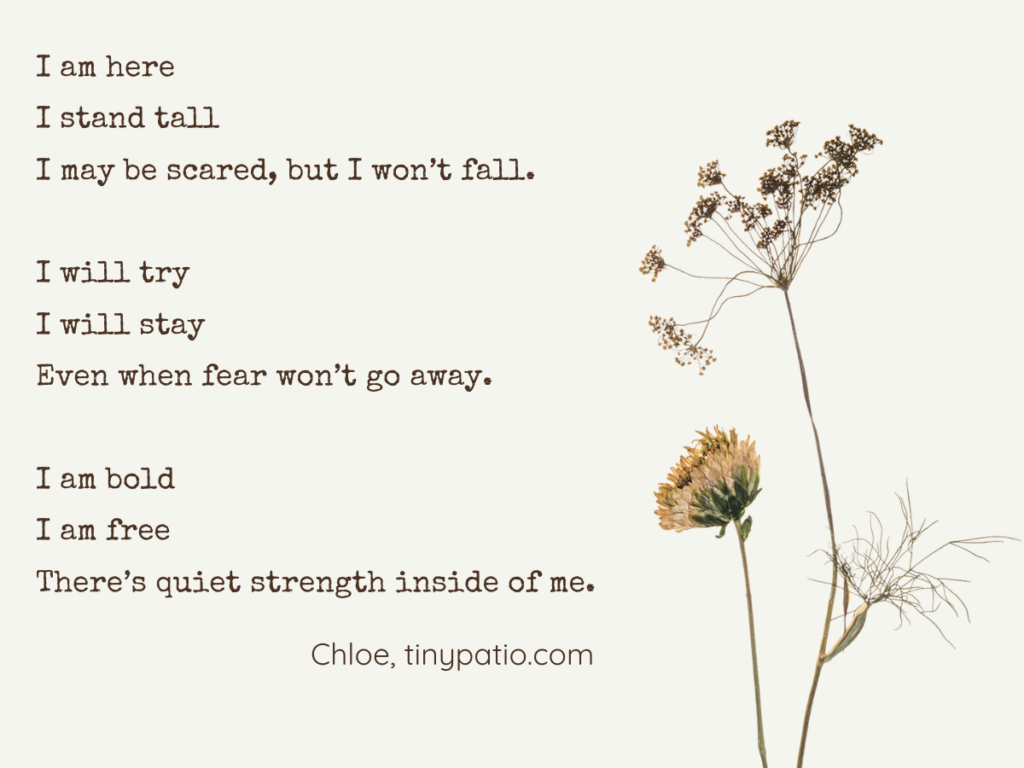Today, let’s talk about FEAR. The Nature of Fear Fear is a natural part of being human. It alerts us to danger and prepares our bodies to respond. But not all fear is the same. Some fears come from real, physical threats, while others stem from the ego — our sense of self, identity, and pride. Physical Danger vs. Ego Danger Physical danger refers to real, immediate threats to your safety — like facing a wild animal, being caught in a storm, or standing near a cliff edge. Your fear in these situations is your body’s way of keeping you safe. It’s primal, protective, and necessary. Ego danger, on the other hand, is much more subtle. It involves fear of being judged, rejected, or seen as a failure. These fears often live in our imagination and stem from our desire to protect our self-image. Understanding the Ego’s Role The ego wants to maintain a sense of control and importance. When something threatens this — like a harsh comment, a mistake, or a risk of embarrassment — the ego flares up. You might feel anxious or avoid the situation altogether. The problem is, these reactions aren’t protecting you from harm — they’re protecting your pride. Real-Life Examples Fear of Failure: You might avoid trying something new because the thought of not doing it well bruises your ego. Fear of Rejection: You might hold back your opinions or true personality to avoid being disliked or left out. Fear of Criticism: You might resist feedback, even when it could help you grow, because it feels like a personal attack. These fears aren’t based on physical harm. They’re rooted in a deep desire to be seen in a certain way. Compare that to: Fear of Fire: Your body tenses and you step away to avoid being burned. Fear of Falling: You feel a jolt when standing too close to a ledge. Fear of Predators: You run or hide when facing a real threat. These are instinctive reactions meant to protect your body. How to Respond to Each Type of Fear When facing physical fear, it’s wise to listen to your instincts. If there’s a real risk to your safety, it’s okay to retreat, take precautions, or seek help. These reactions can save your life. When dealing with ego-driven fear, pause and ask yourself: Is this fear protecting my body, or just my pride? Often, the ego exaggerates the danger. A mistake won’t ruin your life. A judgment won’t define your worth. Rejection is part of being human. Once you recognize ego-driven fear for what it is, you can choose to act anyway. That’s where bravery begins. Building Inner Strength Bravery isn’t the absence of fear — it’s the willingness to act even while feeling afraid. Especially with ego-driven fears, the bravest thing you can do is show up as yourself. Speak honestly. Try new things. Let people see who you really are. Every time you do, you chip away at the illusion that you must be perfect or untouchable. And with each small act of courage, your sense of inner freedom grows. We all experience fear. Some of it protects our bodies; some of it protects our egos. The key is to know the difference. Physical fear calls for caution. Ego fear calls for compassion and courage. Next time fear arises, take a breath. Ask yourself what it’s really about. And if it’s just your ego speaking — thank it for trying to help. Then gently, bravely, step forward anyway.
Category Archives: Psychology facts
Stringing small lights around your backyard deck can make it feel like a vintage café. Putting colored lights in your kids’ bedrooms or warm lights in your garden can also create a cozy ambience. This trend of decorating with string lights has become really popular, and many of us didn’t expect it. But why do these little lights make us feel good? The string lights market has grown a lot in the U.S. and around the world over the past few years. This started as a fun decorating idea before the pandemic, but as people stayed home more, they used these lights both inside and outside more often. Reports show that the global string lights market was nearly $450 million in 2021, and it’s expected to reach over $768 million by 2027. Why Should We Use String Lights? String lights are like backyard bonfires, cozy fireplaces, or our favorite candles. These little lights make us feel good. According to WebMD, some benefits of decorating with lights are: Making us feel closer to others Improving our mood Making us feel more hopeful. Why Do We Feel Happy When We See String Lights? Many people feel happier when they see small lights because it causes the brain to release dopamine, a chemical that makes us feel good. Research shows that colorful holiday lights have this effect, and so do decorative string lights. This is due to something called color therapy, which means that seeing colorful or pretty lights makes our brains release happy chemicals. This type of therapy is used to help people with anxiety and depression. Holiday Memories A while ago, we mostly used indoor lights for holidays, such as Christmas and New Year. Many holidays use lights, so seeing string lights can make us remember these special times and feel cozy and relaxed. Ideas for Using String Lights If you want to feel happier, try using string lights. Pick spots you want to make more inviting, like your bedroom for a cozy glow or in the corners of a rec room where you want people to hang out more. You can find string lights in yellow or different colors online or at home improvement stores. Many grocery stores also sell them in the outdoor section, and even dollar stores have them. Want to try them out first? Use a string or two of your leftover holiday lights. Not all string lights need to be plugged in; some are solar-powered, and some use batteries. Here are some ideas: Hang up the lights along the fence of your balcony. Wrap small lights around a big potted plant. Put a string of lights along the back of a shelf or bookcase. Install a strip of small LED lights on top of your kitchen cabinets or under the bottom. If you have a canopy bed, drape lights across the top or hang them along the sides. Put a small string of lights inside an empty lantern or tall glass container. What To Consider When Buying String Lights? Length. Style. Brightness (it should be not too bright, not too dull). Power source (plug in or battery operated). Is it easy to install? Can we replace bulbs if one of them burns out? Photo credit: Adobe Stock


